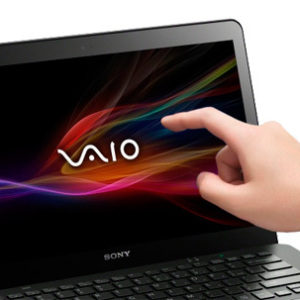Modern computers can support not one video card, but several (for example, built-in, discrete, external, etc.). Manage them, switching to the desired, help the BIOS settings that we will tell below. It should be noted that at a particular point in time, only one device can work, therefore the inclusion of one video card will be accompanied by the other.
How to turn on the video card in bios
If the system unit has already been purchased with a discrete video card and a customized operating system, you will most likely not feel any problems. But when using an independent purchase of the upgrade, an important question will rise on how to switch from the old card to a new one. Usually the monitor and so will work with the video card, to which it is connected to the connector. If this did not happen:
- Reboot your computer and on the starting load screen looking for a string indicating the hotkey that opens the input to the BIOS (looks like "Press .... To Enter Setup"). Owners of Windows 10 and UEFI go through "All Parameters" -\u003e "Update and Security" -\u003e "Restore" -\u003e "Special options", after a reboot - in "Diagnostics" -\u003e "Advanced parameters" -\u003e "UEFI embedded parameters ".
- Next, the location of the interface elements and the sections they need can differ significantly, depending on the type of BIOS, the manufacturer. Therefore, we will look for items to help customize video and called Boot Graphic Adapter Priority or First Display Boot, Advanced Chipset Features, Chipset Features Setup, Primary Vga Bios, Vga Boot From, PEG Port / Graphic Adapter Priority, Integration Video, Primary Video Controller. As you can see, there are many options. In order not to be confused, it is better to figure out the BIOS version in advance and familiarize yourself with the documentation for it.
For example, in AMI BIOS:
- we go to the "Advanced" section;
- choose "chipset settings";
- in the PRIMARY GRAPHIC ADAPTER point, you specify "PCI" for the built-in card or "PCI-E" for discrete.
In the UEFI BIOS (for the motherboard from ASUS):
- click "additionally";
- we choose "Log in to the Advanced Mode" -\u003e "OK";
- go to the "Advanced" tab;
- we are looking for a string "System Agent configuration";
- we go to "graphics parameters";
- install an IGPU for an integrated card, PCI \\ PCI-E - for other devices connected to the appropriate connectors;
- do not forget to save the changes with the F10 -\u003e "Yes button".

It is important to remember that after switching the card in the BIOS, it is necessary to reconnect its cable with the one you have worked before, as well as download and install the appropriate drivers. Although the described methods are most reliable, turn off or enable a video card with other ways, for example, through "Device Manager" in Windows, various software (for example, the NVIDIA and Catalyst Control Center control panel).































